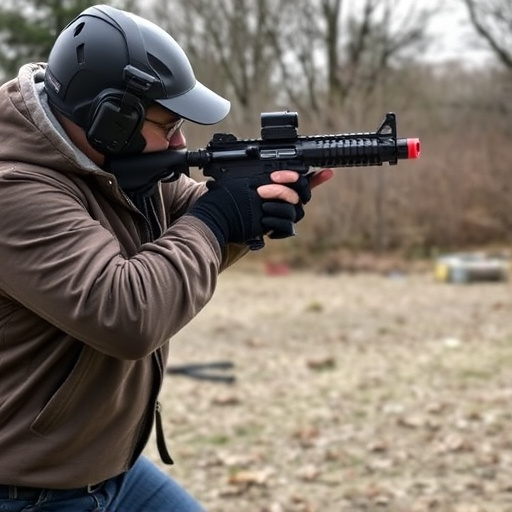Pepper spray training is crucial for beginners seeking personal safety, offering a non-lethal way to disable attackers by irritating their senses. Effective use demands practice in aiming, distance, and pressure, while training also covers safety aspects like storage, local laws, and legal implications. Beginners should focus on high-concentration sprays, learn wind dynamics, keep the spray accessible, and understand when to deploy it responsibly.
“Uncover the power of self-defense with our guide to pepper spray training for beginners. ‘Understanding Pepper Spray: The Basics for Beginners’ explores the fundamentals, offering insights into how these devices work and their effectiveness in real-world scenarios.
Next, we delve into ‘Choosing and Using Self-Defense Inflammatory Spray Devices Effectively’, providing practical tips for selection and application. Furthermore, ‘Safety and Legal Considerations’ ensures you’re aware of the regulations surrounding pepper spray ownership and use. Equip yourself with knowledge and gain confidence in your personal safety.”
- Understanding Pepper Spray: The Basics for Beginners
- Choosing and Using Self-Defense Inflammatory Spray Devices Effectively
- Safety and Legal Considerations for Pepper Spray Training
Understanding Pepper Spray: The Basics for Beginners
For beginners considering self-defense, understanding pepper spray—a non-lethal but highly effective deterrent—is a crucial step. Pepper spray, also known as oleoresin capsicum (OC) spray, disrupts an attacker’s vision and breathing by irritating the eyes, nose, and respiratory system. This temporary blindness and coughing can provide enough time for a victim to escape or summon help.
Pepper spray training for beginners involves learning proper usage techniques, including aiming, distance, and pressure application. It’s essential to practice with a real device or realistic simulants to develop muscle memory in emergency situations. Training also covers safety precautions, such as storing the spray correctly, understanding its range and durability, and being aware of local laws regarding its possession and use.
Choosing and Using Self-Defense Inflammatory Spray Devices Effectively
When considering self-defense inflammatory spray devices, also known as pepper spray, beginners should prioritize safety and effectiveness. Choosing a device with a high concentration of capsaicin, the active ingredient responsible for the burning sensation, is crucial for deterring potential attackers. It’s important to note that training and practice are essential components of using such devices effectively. Pepper spray training for beginners should cover proper aiming techniques, understanding wind conditions, and learning safe storage practices.
During use, maintaining a close distance to the target area while simultaneously aiming and activating the spray is key. Practicing with a mock attack scenario can help beginners improve their reaction time and technique. Additionally, keeping the device readily accessible and regularly testing its functionality ensures preparedness in an emergency. Remember that proper usage of self-defense inflammatory spray devices is about more than just carrying it; it’s about being equipped with the knowledge and skills to deploy it successfully during a threatening situation.
Safety and Legal Considerations for Pepper Spray Training
When it comes to pepper spray training, especially for beginners, understanding safety and legal considerations is paramount. Before even considering deploying a self-defense inflammatory spray device like pepper spray, individuals should familiarize themselves with local laws and regulations governing its use. Every jurisdiction has specific rules regarding who can carry pepper spray, where it can be used, and how it can be obtained. Failure to comply with these laws could result in severe penalties, including fines or even imprisonment.
Pepper spray training for beginners should always prioritize safety. It’s crucial to learn proper handling techniques and storage methods to ensure the spray doesn’t cause harm to oneself or others accidentally. Training sessions should also cover de-escalation strategies and when it’s appropriate to use pepper spray as a last resort. Understanding these nuances is essential in legal defense should any incidents occur, as it demonstrates an individual’s responsible and well-informed use of self-defense tools like pepper spray.
For those seeking effective self-defense tools, pepper spray is a powerful option. This article has provided a comprehensive guide on pepper spray training for beginners, covering its basics, usage techniques, and safety precautions. By understanding the device’s capabilities and legal implications, individuals can make informed decisions about adopting this personal safety measure. Remember, knowledge is the first step towards empowerment, and with proper training, pepper spray can be a valuable asset in potentially dangerous situations.
